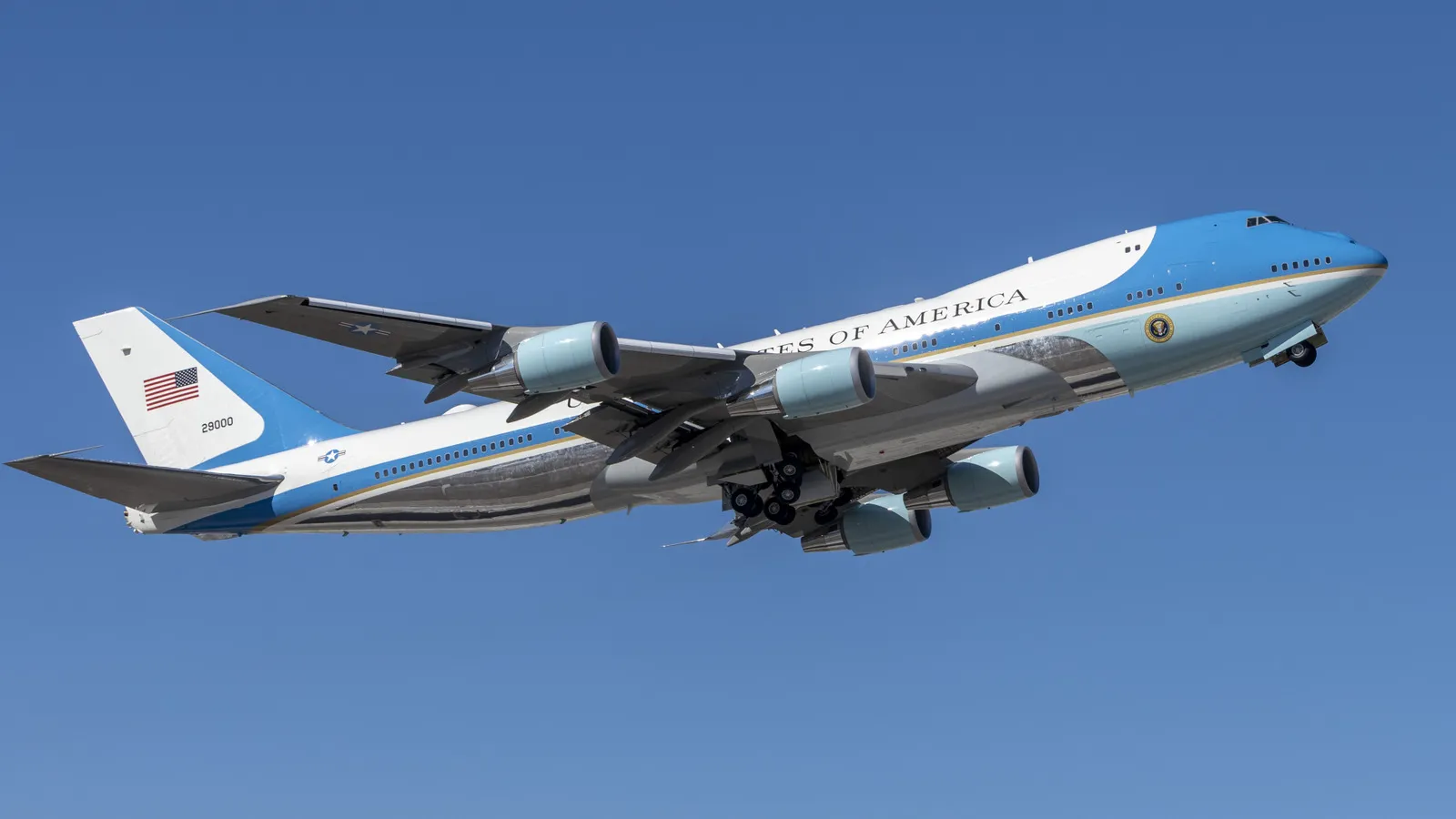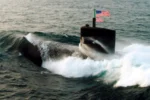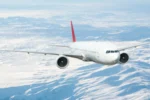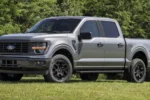Air Force One Flight Times: A Speed Comparison

The allure of Air Force One captivates both Americans and aviation enthusiasts worldwide, symbolizing the power and prestige of the presidency. However, there’s a common misconception to clarify: Air Force One is not a specific aircraft, but rather the call sign for any U.S. Air Force plane designated to carry the President. Among these, the Boeing VC-25A, a modified Boeing 747-200, stands out as the most recognized. This remarkable aircraft serves not only as a means of transport but also as a mobile command center, capable of efficiently covering vast distances—such as the trip between New York and Los Angeles. In this exploration, we will delve into the impressive performance capabilities of the VC-25A, compare it with commercial variants, and preview its upcoming successor, the Boeing VC-25B.
| Aircraft Model | Engines | Thrust per Engine (lbs) | Max Speed (mph) | Range (miles) | Flight Time (hrs) |
|---|---|---|---|---|---|
| Boeing VC-25A | 4 GE CF6-80C2B1 | 56,700 | 630 | 7,800 | 3.93 (3h 56m) |
| Boeing 747-200 (Commercial) | 4 GE CF6-50E2 | 52,500 | 602 | 8,170 | 4.11 (4h 7m) |
| Boeing VC-25B (Future) | 4 GE GEnx-2B | 66,500 | 660 | 8,900 | 3.75 (3h 45m) |
Understanding Air Force One: More Than Just a Plane
Air Force One is a unique title that many people associate with the President’s aircraft. However, it’s important to know that this name refers to any U.S. Air Force plane carrying the President, not just one specific airplane. This means that when the President travels, any designated aircraft can be called Air Force One. This allows for flexibility and ensures that there is always a secure option available for the leader of the nation.
The most famous Air Force One aircraft are the Boeing VC-25A planes, which are modified versions of the Boeing 747-200. These planes are equipped with advanced technology and security features, making them a flying fortress. They not only transport the President but also serve as mobile command centers, ensuring that the President can perform duties even while in the air.
Speed and Performance: How Fast Can Air Force One Go?
When it comes to speed, Air Force One is impressive. The current VC-25A can fly at a maximum speed of 630 mph. This means that when the President needs to travel across the country, the plane can make the trip from New York to Los Angeles in less than four hours, given ideal conditions. This speed is crucial for quick responses to events and emergencies.
In the future, the new VC-25B will take performance to another level with a top speed of 660 mph. This means the President will be able to travel even faster, making the flight time from coast to coast roughly 3 hours and 45 minutes. Such speed is essential for ensuring that the President can reach vital locations swiftly, underscoring the importance of the aircraft in national security.
The Future of Air Force One: Upgrades and Innovations
As technology advances, so does Air Force One. The upcoming VC-25B model will be based on the Boeing 747-8, featuring powerful engines that provide better speed and range. These upgrades are not just about going faster; they also enhance safety and efficiency. The new aircraft will be better equipped to handle various challenges in air travel.
With increased thrust and advanced systems, the VC-25B will ensure the President can travel safely anywhere in the world. This aircraft will not only maintain the legacy of Air Force One but also set a new standard for presidential travel. The innovations being introduced reflect the commitment to keeping air travel secure and effective for the President.
The Role of Technology in Air Force One’s Design
Air Force One is not just a mode of transportation for the President; it’s a fortress in the sky, equipped with cutting-edge technology. The Boeing VC-25A features advanced communication systems, allowing the President to stay in touch with military and government officials at all times. Additionally, the aircraft is fitted with sophisticated defense mechanisms, including countermeasures against missile threats, ensuring the safety of the Commander-in-Chief during flights.
Moreover, the plane’s interior is designed for both comfort and functionality, with a suite that includes an office, meeting rooms, and even a medical facility. Every detail is meticulously planned to ensure that the President can perform duties seamlessly, even while airborne. These technological advancements not only enhance security but also reflect the importance of efficient governance in today’s fast-paced world.
Understanding Air Force One’s Operational Readiness
Operational readiness is a critical factor for Air Force One, ensuring that it can respond swiftly to any situation. The aircraft undergoes rigorous maintenance checks and upgrades to keep it in peak condition. The USAF has a dedicated team that works around the clock to ensure that both VC-25A planes are always ready for deployment, reflecting the commitment to security and readiness that underpins the entire operation.
Additionally, flight crews receive extensive training to handle various scenarios and to operate the aircraft under different conditions. This proactive approach means that, whether it’s a scheduled trip or an emergency, Air Force One can take to the skies with minimal notice, affirming the United States’ readiness to respond to global events at a moment’s notice.
The Cultural Significance of Air Force One
Beyond its technical capabilities, Air Force One holds a significant place in American culture and history. It symbolizes the power and presence of the U.S. presidency, often appearing in media and popular culture as a representation of American leadership. The sight of Air Force One landing at an airport or taking off can evoke feelings of patriotism and unity among Americans, serving as a reminder of the country’s strong governance.
Moreover, the aircraft has been a backdrop for numerous historic moments, from diplomatic missions to global crises. Each flight tells a story, encapsulating the history of the United States through its engagements around the world. As a result, Air Force One transcends its role as merely a transportation vehicle; it is an emblem of national pride and a tangible link to the office of the President.
Comparing Air Force One to Commercial Aviation
While Air Force One is a symbol of presidential power, its design and performance can also be compared to commercial aviation. The Boeing 747-200, serving as a commercial counterpart, offers a glimpse into the evolution of air travel. Though both aircraft share the same basic airframe, the modifications made to Air Force One elevate it to a level of luxury and security not found in standard commercial jets.
Moreover, the operational capabilities of Air Force One, such as its extensive range and speed, highlight the advancements in aviation technology. While commercial flights are optimized for efficiency and cost-effectiveness, Air Force One represents the pinnacle of technological achievement, showcasing what is possible when national security and leadership combine with aviation innovation. This comparison allows us to appreciate the unique features that set Air Force One apart in the aviation landscape.
Frequently Asked Questions
What is Air Force One?
**Air Force One** is not a specific plane; it’s the call sign for any U.S. Air Force aircraft carrying the President. The two main planes are Boeing VC-25A jets.
How fast can Air Force One fly?
The **VC-25A**, which is the current Air Force One, can fly at a maximum speed of **630 mph**. This allows it to travel quickly between cities in the U.S.
What is the range of Air Force One?
Air Force One can fly **7,800 miles** without needing to refuel. This means it can fly long distances, like from the U.S. to Europe.
What makes Air Force One different from regular planes?
Air Force One has many special features, such as **anti-missile systems** and advanced electronics. These upgrades help keep the President safe during flights.
What will replace Air Force One in the future?
The **VC-25B** will replace the current model. It’s based on the Boeing 747-8 and will be even faster, with a maximum speed of **660 mph**.
How long does it take Air Force One to fly across the U.S.?
Air Force One can fly from New York to Los Angeles in about **3 hours and 56 minutes** at its top speed, making it a quick way to travel.
What is the difference between Air Force One and commercial planes?
Air Force One is specially modified for the President, while commercial planes are designed for regular passengers. Air Force One has better speed, range, and safety features.
Summary
The content discusses Air Force One, emphasizing that it is not a specific aircraft but a call sign for any USAF plane carrying the President. The primary aircraft used is the Boeing VC-25A, a modified 747-200, serving as a mobile command center. It highlights the aircraft’s performance, noting a maximum speed of 630 mph and a range of 7,800 miles. Comparatively, the upcoming VC-25B, based on the 747-8, will have a speed of 660 mph and a range of 8,900 miles. The article concludes by calculating flight times across the U.S., showcasing the efficiency of these aircraft.






